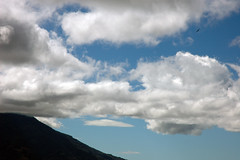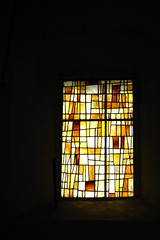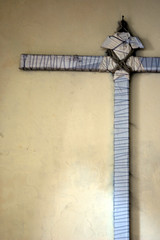I’ve written before of the ways and habits of the Atitecos of Atitlan, or rather, related what others have observed about the people who live around the lake rimmed by three volcanoes in the Guatemalan Highlands. The contemporary Easter practices of these Maya who managed under Spanish conquest and the persistent presence of the Catholic Church to preserve their old stories and practices is no less interesting -- and perhaps it’s no accident that it brings us back to belly buttons and to the renewal of Spring:

Just as the three volcanoes conceptually grew out of the waters of Lake Atitlan, the three church altarpieces rise above the floor of the church. The space beneath this floor contains a number of burials which Atitecos associate with sacrificial offerings, semideified ancestors, and indigenous kings. Tz’utujils also believe that the floor of their church constitutes a thing barrier separating them from the underworld, where all the creative and destructive elements inherent in nature gather together.
The most sacred opening into the underworld realm is a small hole called the pa ruchi’ jay xibalba (“at the doorway of the underworld”) or r’muxux ruchiliew (“navel of the face of the earth”) located 3m. west of the raised altar in the center of the nave’s floor. It is approximately a meter deep and 35cm. across and is normally covered with a removable flagstone. Among traditionalists, this hole is the principal access point leading to the underworld and the symbolic center of creation....
The navel hole at Santiago Atitlan is only uncovered once a year, at midnight prior to Holy Thursday during Easter Week. On the following day, Holy Friday, a great throng of Atitecos gather in the church to watch a massive wooden cross, on which the life-size sculpture of Christ with moveable arms has been nailed, being lowered into the hole.
The placement of the cross of Christ in the ground signifies not only his entrance into the underworld of death, but also represents the means by which the resurrected God reemerges to new life from the center point of creation. One of the sacristans who participated in the ceremony told me that the cross is “planted” in the ground just as a seed is planted. Christ on the cross is thus reborn “just like new maize plants.”
From Allen J. Christenson's Art and Society in a Highland Maya Community.









2 comments:
Thought you'd like to know, Thumper and I read The Belly Button Book before bed tonight. We did not at the time realize the significance of our selection. Bee Bo!
good info
Post a Comment